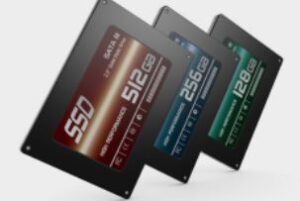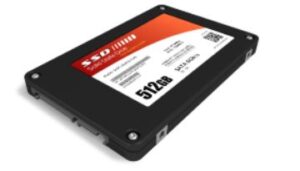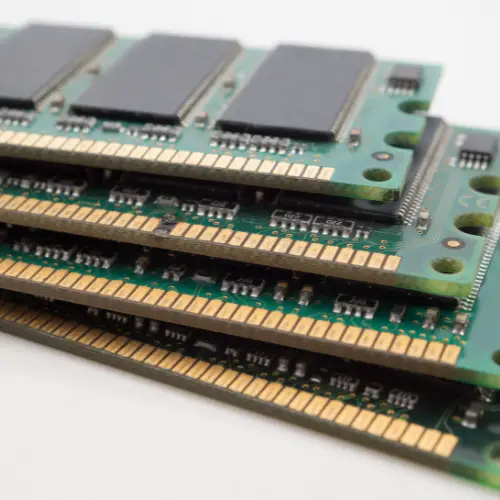
Content
- 1 Is 512GB SSD enough
- 2 How many Photos can 512GB SSD Hold?
- 3 How much Music Audio can 512GB SSD Hold?
- 4 How many videos can 512GB SSD Hold?
- 5 How many games can 512GB SSD Hold?
- 6 Pros of a 512GB SSD
- 7 Cons of a 512GB SSD
- 8 Is 512GB a lot of storage?
- 9 Is 512GB SSD Enough for Students?
- 10 Do I need more than 512 GB SSD?
- 11 Is a 512GB SSD enough for photo editing?
- 12 Is a 512GB SSD good for gaming?
- 13 Is 512GB SSD enough for video editing?
- 14 Why does my 512GB SSD show less space?
Is 512GB SSD enough
Is 512GB SSD enough? There are many possible answers you can get, it depends on your hardware usage and your budget. I will discuss all you need to know about 512GB SSD to help you figure out for yourself whether it is enough for you or not.
What is an SSD?
SSD stands for a solid-state drive. It’s a type of computer storage that holds data on flash memory chips. Solid-state drives use flash memory to store data in solid-state chips instead of on spinning disks. SSDs have no moving parts, which means they’re more resistant to damage from drops and other physical trauma, and they’re also faster than traditional hard drives because there’s no need for physical movement of the read/write head when accessing data.
What is 512GB?
A gigabyte (GB) is a unit of digital information, usually expressed as 1,000,000 bytes. A megabyte (MB) is a million bytes, or 10^6 = 1,000,000.
A kilobyte (KB) is 1,024 bytes.
A terabyte (TB) is 1,024 gigabytes.
A petabyte (PB) is 1,024 terabytes. A petabyte is about one quadrillion bytes.
You may have heard the term “gig,” which refers to a single gigabyte of data or to electronic equipment that operates at one billion Hz per second or faster. For example, if you’re using an 802.11g wireless network device that operates at 54 Mbps (megabits per second), then it can transmit data at 54 Mbps/1 Gbps = 54,000 kilobits per second (Kbps).
How many Photos can 512GB SSD Hold?
The average photo these days is about 4MB in size, which means that 512GB can hold around 250,000 photos. If they are all 4MB and they’re all just sitting there doing nothing, then yes you should be fine to store that many photos on your 512GB SSD.
However, if you keep all your photos on your computer and use it as a backup device for your photos as well as other important data (like work documents), then it’s likely that you won’t be able to store 250K+ photos since most people will want their computer to also perform other tasks like browsing the internet or watching videos, etc.
How much Music Audio can 512GB SSD Hold?
The average song is about 4MB in size. The average album is about 10-12 songs, so for the sake of simplicity, we will assume that an album is about 12 songs. That means that 512GB can hold about 125,000 songs!
How many videos can 512GB SSD Hold?
A video file is made up of many parts, some of which can be compressed more easily than others. A typical video file has about 200MB for the actual video and another 1000-2000MB for audio. There are also some other small bits that don’t compress easily, such as thumbnails and metadata. So, if we assume an average compression ratio of 3x (which is a very conservative estimate), then 1GB of space can hold 800MB of data.
If you have a 512GB SSD, this means that you can fit 80 hours’ worth of 1080p video onto it. For 4K UHD (3840×2160) video, that drops to just 48 hours worth.
How many games can 512GB SSD Hold?
A good estimate of the storage capacity required for an operating system and non-gaming programs is 50GB. A typical game requires 20GB of storage space. In total, your gaming computer should have 22GB of storage space available (not counting the SSD, which should be advertised as 500GB rather than 512GB in order to avoid confusion).
Pros of a 512GB SSD
- Durability and Reliability
The main reason why SSDs are worth the investment is their durability and reliability. Compared to hard disk drives, solid-state drives have no moving parts, which means they’re much less likely to fail over time. In fact, solid-state drives are so reliable that they’re used in servers and other high-end applications where uptime is paramount.
- Speed
SSDs use NAND flash memory to store data. This makes them faster than hard disk drives, which rely on mechanical parts like spinning platters and reading heads to find and retrieve data. SSDs offer much faster load times in a wide variety of applications compared to HDDs. In fact, they can be up to 20 times faster in loading programs, opening large documents, or booting up your computer.
- Less Heat Generation
A 512GB SSD also generates less heat than its hard drive counterpart, which can improve the overall lifespan of your computer. You won’t need to worry about the extra heat damaging other components in your computer either, such as your CPU or graphics card.
- Small Size
SSDs are generally smaller than traditional HDDs. This means that you can save space and use the extra space for other things, such as adding more memory or upgrading your graphics card.
- Reduced Power Consumption
A 512GB SSD uses less power than a 250GB HDD. This is because SSDs don’t have mechanical parts that spin up and down, and they use less power to transfer data. The amount of power used by an SSD depends on the amount of data being accessed as well as the type of flash memory used in the drive. The newer 3D NAND technology has been optimized for lower power consumption.
Cons of a 512GB SSD
- 512GB SSDs are expensive
The biggest disadvantage of a 512GB SSD is the price. The larger the drive, the more expensive it’s likely to be per gigabyte. So if you’re looking for an SSD with a large capacity, you may need to invest in a more expensive drive. A 512GB SSD will typically cost about twice as much as a 256GB model
- Unrecoverable data loss
If any of the controller chip, memory cache, or NAND type memory chips are physically damaged, you may be unable to recover your data. This can happen if you drop your computer or if something gets spilled on it (which can happen if your laptop gets knocked over). In addition, SSDs don’t have as much built-in error correction code as traditional hard drives do — so if there’s an error in one spot on an SSD then it may affect all of the data stored in that area of memory.
Conclusion
When you have so much space to work with, you will anticipate that the 512GB SSD is large enough for most workloads today. I am sure that will be true to some extent but if your day-to-day usage does not revolve around multimedia editing or gaming then the 256GB model should suffice for your needs.
FAQ, S
Is 512GB a lot of storage?
To put it simply, yes. The average consumer would probably be content with the 256GB. But anyone with a large media library has likely looked towards upgrading to the 512GB of whatever laptop they are using. For those who love their music, movies, and any other forms of media, it’s safe to say that 512GB is going to be enough space for all your data.
Is 512GB SSD Enough for Students?
The answer to this question depends on what you want to do with the laptop. If you are a student who wants to use the laptop for doing simple things like writing documents, surfing the internet, gaming, and watching videos then 512GB SSD is good enough for you. But if you are going to use your laptop for some heavy tasks like video editing and gaming then you should go for at least 1TB of storage space.
Do I need more than 512 GB SSD?
No. While it’s true that a lot depends on the type of work being done, and how much time is willing spent on transferring multiple files between drives, the reality is that 512 GB solid-state drives are more than enough for any kind of professional or even hobbyist operation.
But In the end, it depends. If you are running a lot of apps day-to-day, then stick with the 256 GB SSD. Anything more is just overkill. If you have a lot of photo/video editing to do or for professional uses, then going up to 512 GB might be better. The 1 TB SSD will be good for intensive graphic work like 3D rendering and video encoding provided that you have the hardware to support it.
Is a 512GB SSD enough for photo editing?
the answer really depends on your workflow. If you are someone who edits thousands of photos every week like a professional photographer or you have hundreds of thousands of images on your hard drive, then maybe 512GB isn’t enough. On the other hand, if you’re only editing a handful of photos per week or month, and you don’t have many files on the computer anyway, then 512GB will likely be plenty. Plus, in general, SSDs are just getting bigger and bigger. So it’s possible that even 512GB won’t be enough in another year or two.
Is a 512GB SSD good for gaming?
The bottom line is that a 512GB SSD is certainly good for gaming in the right system, but it’s not necessarily what every gamer should be picking up. Ultimately, you have to look beyond pure storage space and consider the performance of your entire system and if any other bottlenecks may be coming into play. We hope this guide will help you to decide whether a 512GB SSD is right for your gaming needs or not.
Is 512GB SSD enough for video editing?
While 512GB is more than enough space for working with smaller projects and files, this amount of storage would fill up quite quickly when working on 4K or higher resolution projects. When in doubt, always make sure to have extra storage for when you need it, but in my experience, a 512GB SSD is a great starting point for any video editor who isn’t trying to cut major storage costs.
Why does my 512GB SSD show less space?
Your 512GB SSD drive will show less usable space than it has due to the fact that computers like to show you ‘decimal’ numbers (1.5, .45, etc.) rather than ‘binary’ numbers (1.111111, .101010, etc). This means that there is some rounding involved when showing decimal numbers to people. For example, the number 512GB actually has 761,374,418 bytes or 761.3GB of space available in decimals. The computer shows 727GB because 500GB is easier for most people to wrap their heads around and remember, but what they don’t realize is that they’re actually losing 23% of your hard drive space!







